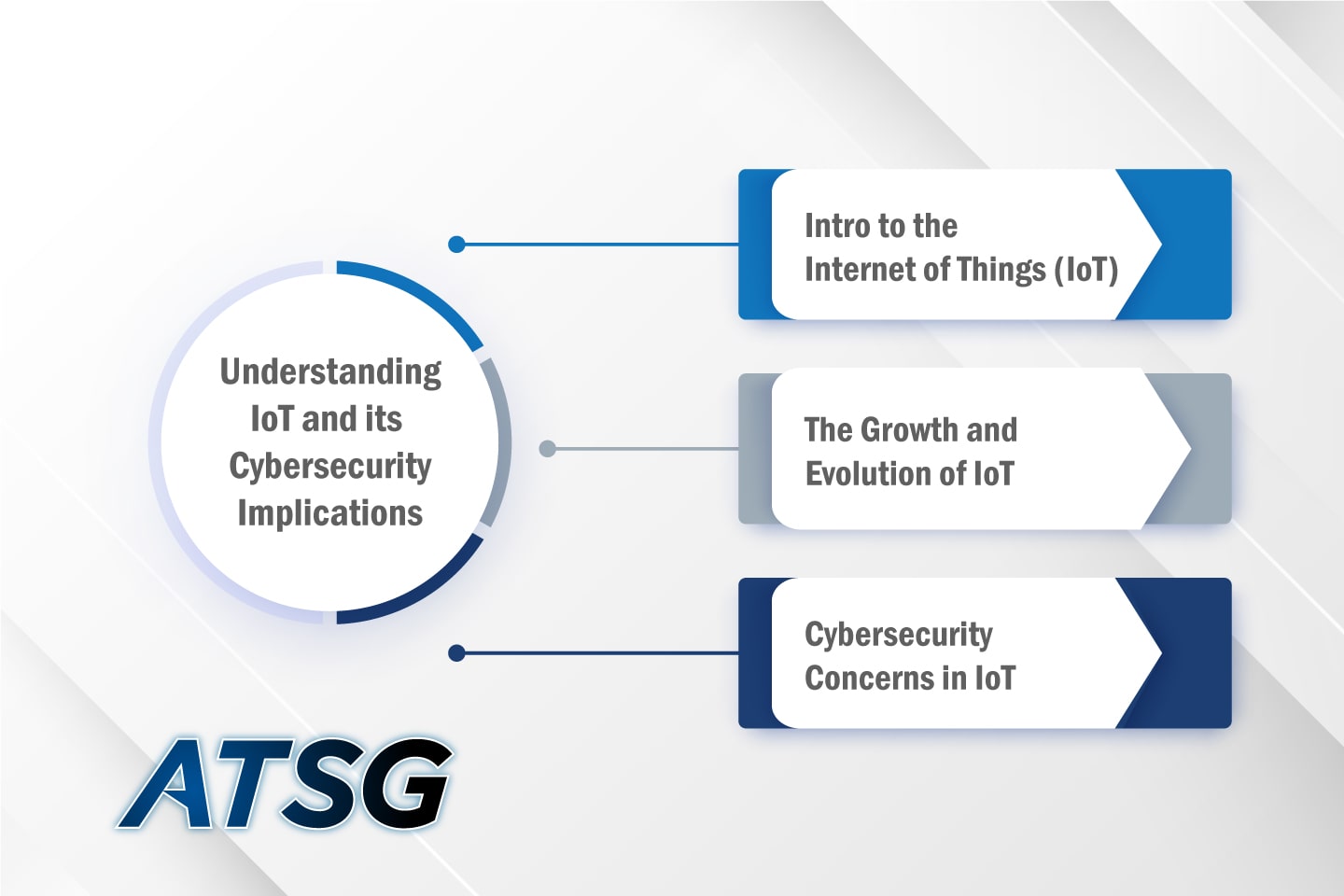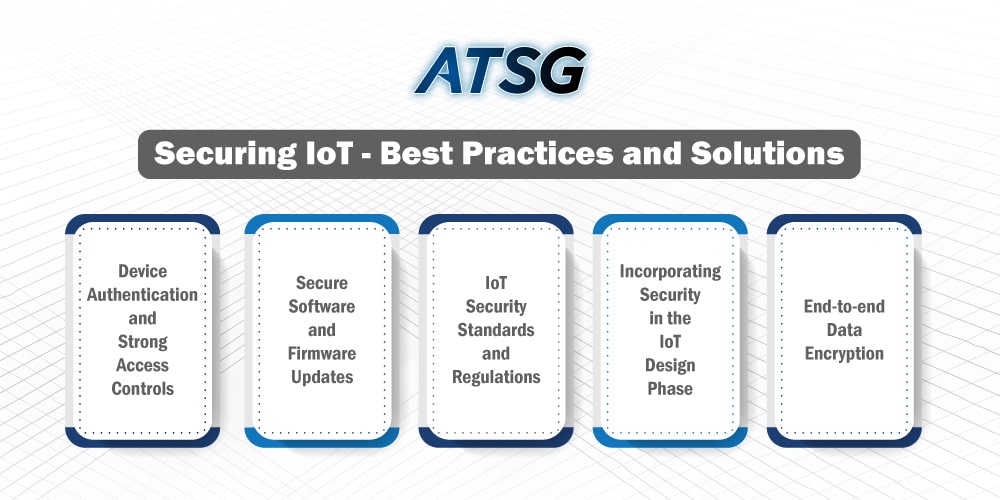In the modern tech landscape, devices are increasingly interconnected through the Internet, forming what’s known as the Internet of Things (IoT). This network transforms ordinary devices into intelligent systems that can communicate and exchange data. However, as IoT expands, it brings along security challenges. This overview delves into the evolution of IoT, its associated cybersecurity risks, and the strategies to address these vulnerabilities.
Understanding IoT and its Cybersecurity Implications

Intro to the Internet of Things (IoT)
We live in an era where not only data is involved, but highly inter-connected devices are also an integral part of the ecosystem. The universe of inter-connected devices, known as the Internet of Things (IoT), exchanges data across wired and wireless networks.
The Growth and Evolution of IoT
IoT has evolved significantly since its inception, transforming the way we interact with technology, and the world around us. With the early conceptualization of connecting devices to the Internet; the idea was advanced with wireless communication technologies, such as Wi-Fi and Bluetooth connectivity.
With the expansion of applications and technology, IoT started to gain broader attention, and became more accessible as well as affordable. The previous years, and the pandemic, have accelerated the pace of digital evolution. IoT has given rise to a network of connected gadgets and smart sensors, that redefine organizational structures.
Cybersecurity Concerns in IoT
Securing IoT devices can be difficult, as security is often neglected in favor of fast product releases. Many businesses are unaware of the potential risks of IoT, and prioritize cost savings and convenience. Operational risks can arise from connected IoT sensors and devices, impacting everything from national power infrastructures to global manufacturing operations.
The Unique Challenges of IoT Cybersecurity
Widening Attack Surface and Broadening Device Range
IoT devices are faced with the challenge of vulnerable APIs, that are used as entry points to command-and-control centers, from where attacks such as distributed denial of service (DDoS) and breaching networks etc. are launched. This increases the attack surface, and the number of inter-connected devices it impacts.
Weak Default Configurations and Passwords
IoT devices are commonly shipped with default passwords that many users fail to change, giving cybercriminals easy access. In other cases, users setup weak passwords that can easily be cracked by malicious actors.
Firmware and Software Vulnerabilities
Firmware developed for IoT devices often includes open-source software, which is prone to bugs and vulnerabilities. These loopholes can be exploited by cyber miscreants, for gaining un-authorized access to IoT systems.
Limited Capacity of Legacy Security Measures
Due to the sheer variety and scale of IoT devices, integrating them with legacy security systems ranges from being challenging, to impossible in some extreme cases. Most organizations lack the in-house capabilities to pull this off.
Data Privacy Concerns
The vast amount of data being generated by IoT devices makes it complicated to oversee, manage and protect. At the end of the day, data management has its own set of challenges and associated costs.
Interoperability and Standardization Issues
A common error that often occurs is the lack of standardization, causing inter-operability issues that can lead to compatibility problems, and limited functionality, especially with IoT devices.
Securing IoT – Best Practices and Solutions

Device Authentication and Strong Access Controls
The initial step to improving IoT security is to change the default password that such a device is originally manufactured with. Once the password has been changed initially, it should also become a regular practice for the password to be updated. Strong password protection can go a long way in preventing the compromise of IoT devices by cyber criminals.
Secure Software and Firmware Updates
IoT devices can be secured by implementing robust security measures within their software. This approach can safeguard the ecosystem from potential cyber attacks. Any device and software installed needs to be checked regularly, to ensure there are no threats or malicious activities. Keeping software updated and patched is “half job done”, in the fight against IoT security risks.
IoT Security Standards and Regulations
Harnessing threat intelligence, rapid detection, and strong defenses is where businesses can really succeed. Organizations can benefit from intelligent solutions, with Cybersecurity Strategy and Layered Application Security as good starting points.
Incorporating Security in the IoT Design Phase
Integrating security solutions and access controls across all domains of IoT devices, especially during the initial stages, is really effective. It can help mitigate the chances of any catastrophic damage that can occur due to insecure endpoint devices in the first place.
End-to-end Data Encryption
Each organization does not use encrypted communications and configurations. Some organizations are more likely to use normal web protocols that make it easy for attackers to spot weaknesses therein. This is why it is crucial to use resilient protocols like HTTPS, transport layer security, DNS security extensions etc.
The Role of Emerging Technologies in IoT Security
Artificial Intelligence and Machine Learning for Threat Detection
As we continue to expand and connect our devices through IoT, security becomes an increasingly critical concern. Fortunately, artificial intelligence (AI) can play a significant role in keeping our connected world safe. With AI-powered real-time threat detection and response, organizations can quickly identify vulnerabilities, and strengthen their security protocols. By utilizing machine learning (ML) algorithms, we can enhance our ability to detect and respond to cyber threats with lightning speed.
Secure Hardware Modules for Data Protection
It’s important to understand the potential consequences of a private key being leaked. If a malicious actor gains access to a private key, it could infiltrate an IoT device, and potentially access other sensitive resources. To avoid this kind of exposure, Hardware Security Modules (HSMs) are becoming increasingly popular among customers that are looking to protect their digital keys and certificates.
The Future of IoT Cybersecurity
Predicted Trends in IoT Cybersecurity
The evolution of technology infrastructure has enabled critical data gathering, processing, and analysis at the edge. IoT is driving this trend, with an estimated 64 billion IoT devices worldwide by 2026. Applications of IoT range from smart homes and cities, to fitness monitoring and inventory control. By the end of 2023, there will be two to six connected IoT devices for every person on Earth, surpassing the total number of smartphones, tablets, and computers combined.
The Rising Need for IoT Cybersecurity Skills
It’s important to be aware of the fact that cybercriminals have a particular interest in IoT devices. The issue with IoT devices is that they provide new opportunities for cyberattacks. This means that hackers will try to find ways to interfere with the operations of companies, cities, and even countries. So, enterprises need to leverage IoT security skillsets to stay one step ahead.
The Convergence of Physical and Cyber Threats in IoT
In today’s world, cyber threats are becoming more complex and multi-pronged than ever. The convergence of physical and cyber assets, as well as the widespread adoption of IoT devices, has created some vulnerabilities. This new threat landscape has “blurred the lines” between cybersecurity and physical security, making it increasingly difficult for organizations. Now, successful attacks on IoT systems can cause significant disruption.
Conclusion
The Criticality of IoT Cybersecurity
It’s crucial to prioritize IoT cybersecurity in today’s modern work environments, especially with the growing popularity of smart devices. Unfortunately, cybercriminals are also eying these devices, and trying to exploit them. The biggest concern with IoT devices is that they provide an entry point for threat actors to launch cyberattacks. It’s important to take proactive measures to secure these devices, and protect against potential breaches.
The Way Forward in Securing Connected Devices
Implementing IoT technologies with cybersecurity planning makes business more manageable for organizations. The unique capabilities ATSG offers include Cybersecurity Strategy formulation and Layered Application security. Harnessing real-time threat intelligence, rapid detection, and strong responses is where businesses begin to succeed in digital transformation.
ATSG’s cybersecurity solutions also include Managed Detection and Response (MDR) and Zero Trust Architectures. Leveraging technology solutions from professional service providers, like ATSG, adds to the overall efficiency of the business.




